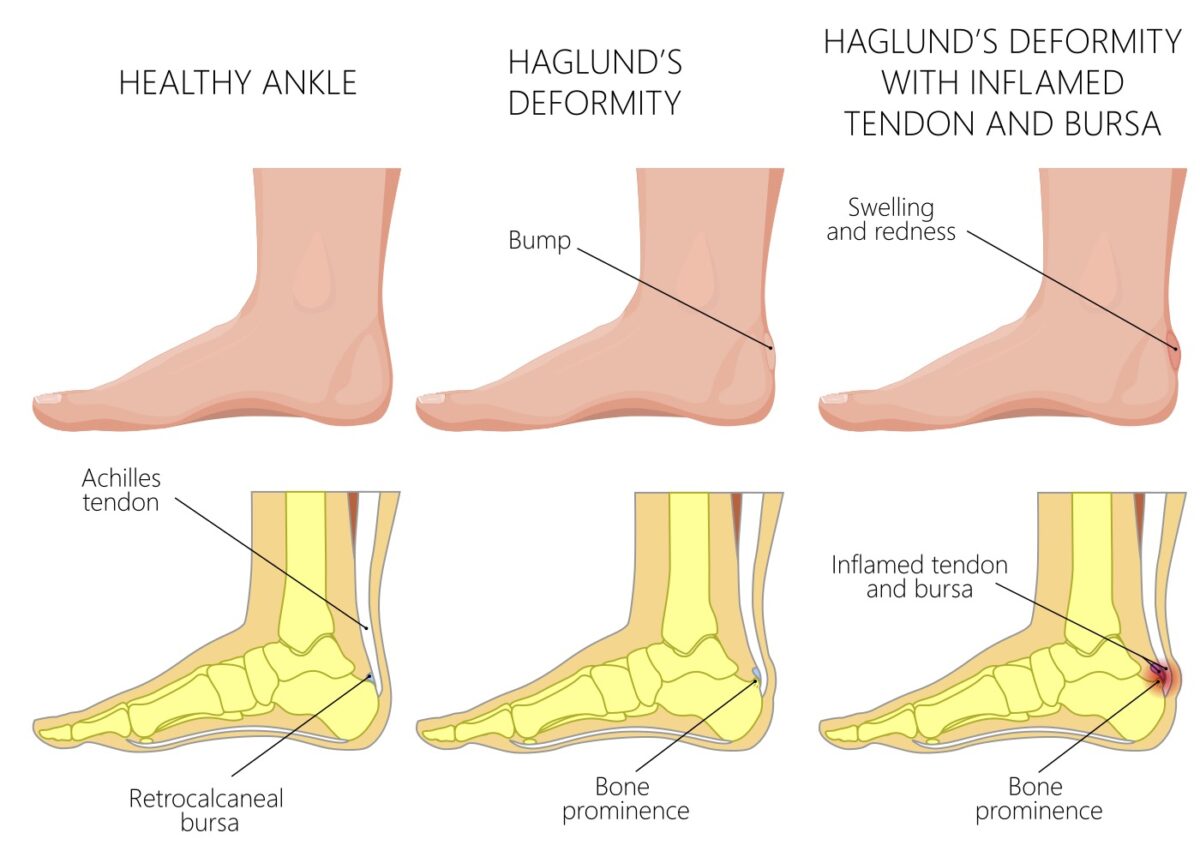Hagland’s Deformity
This article does not constitute as medical advice.
If you are experiencing symptoms of Haglund’s deformity, contact your doctor or make an appointment.
This article does not constitute as medical advice.
If you are experiencing symptoms of Haglund’s deformity, contact your doctor or make an appointment.
Haglund’s deformity is the formation of a bump on the back of the heel where the Achilles tendon connects to the heel. It is also called a ‘pump bump’ or retrocalcaneal bursitis. This condition is more common in women and is usually caused by wearing rigid shoes against the heel. Medical treatment may be necessary if there is long-lasting pain.
This condition has a rap for forming due to wearing tight shoes or heels. This is why it is nicknamed the “pump bump.” However, there are other reasons why this deformity can occur, such as:
Symptoms of this deformation can appear on either or both feet. The pain can also range from moderate to severe. Therefore, it is good to catch this condition early and contact your doctor for proper treatment. Here are some telltale signs of this deformity:
